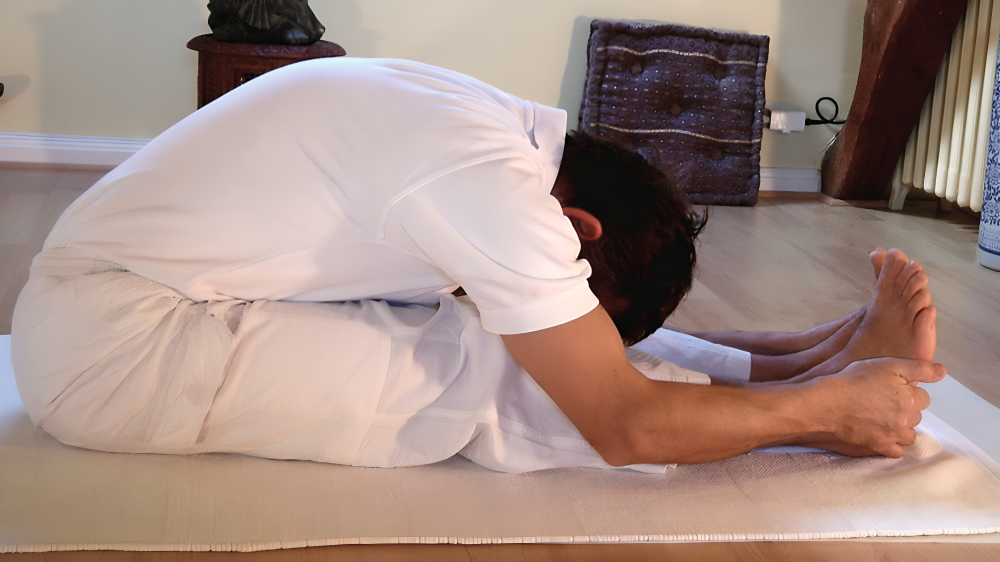
What Is Paschimottanasana?
Paschimottanasana is a Sanskrit term where “Paschima” means “west” or “back,” “Uttana” means “intense stretch,” and “Asana” means “pose.” So, this asana translates to an intense stretch of the back side of the body. In simpler terms, it’s a seated forward bend that stretches the spine, hamstrings, and lower back.
How to Perform Paschimottanasana
Start with the Basics: Sit on the floor with your legs extended straight in front of you. Keep your spine straight, and relax your shoulders.
Inhale and Lengthen: As you inhale, raise your arms overhead, stretching upward to lengthen your spine.
Exhale and Fold Forward: Slowly bend forward from your hips, not your waist. Try to reach your toes with your hands. If that’s too difficult, place your hands on your shins or thighs.
Hold the Pose: Once you’re in the forward bend, breathe deeply. Try to keep your back as straight as possible. Hold the pose for 20-30 seconds, or longer if comfortable.
Release: To come out of the pose, gently lift your torso back up to a seated position with an inhale.
Benefits of Paschimottanasana
Improves Flexibility: This pose stretches the entire back of your body, including your spine, hamstrings, and calves, enhancing your overall flexibility.
Strengthens the Spine: By stretching and lengthening the spine, Paschimottanasana helps improve posture and spinal alignment.
Relieves Stress: The forward bending motion has a calming effect on the nervous system, helping to reduce stress and anxiety.
Aids Digestion: The compression of the abdomen during the pose can help stimulate digestion and improve metabolism.
Enhances Blood Circulation: The deep stretch increases blood flow to various parts of the body, especially the back and legs.
It’s here Dandasana how to do it and what are the benefits
FAQs
1. Is Paschimottanasana suitable for beginners?
Yes, Paschimottanasana is great for beginners, but it’s important to listen to your body and use modifications if needed.
2. Can I practice Paschimottanasana if I have back pain?
If you have severe back pain, it’s best to consult a doctor or a yoga instructor before trying this pose. Mild discomfort is okay, but avoid the pose if it aggravates your pain.
3. How often should I practice Paschimottanasana?
You can practice this pose daily, especially if you’re looking to improve flexibility. Just make sure you’re not pushing yourself too hard

